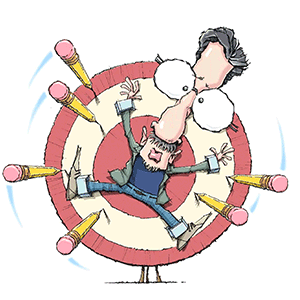Protecting the Panama Canal -- and Waterfowl
Post-inauguration President Donald Trump repeated his Jan. 7 declaration that the U.S. should buy Greenland and regain control of the Panama Canal.
My Jan. 8 column addressed Greenland's strategic value in the defense of North America and the Arctic -- which is precisely why Trump wants to make certain China and Russia don't control it.
I promised a follow-up essay addressing the Panama Canal's physical and political vulnerabilities, to include "criminal, enemy saboteur, sea drone and air drone threats" to the canal and as well as "U.S. hemispheric maritime commerce and infrastructure."
The threats intertwine, strategically (China, threatening to cut it) and tactically (meaning how to attack it, and more on that in a moment).
Per Teddy Roosevelt, the Panama Canal matters. The canal's the sea shortcut connecting the U.S. East Coast to the West Coast. Economic payoff: Shipping freight by water is the cheapest way to transport goods, and rounding Cape Horn is more expensive. Military bonus: The U.S Navy's Atlantic and Pacific fleets can quickly reinforce.
So, describing the Panama Canal as strategically vital to the U.S. understates the case.
In World War II, Japan and Germany knew that. Which is why America fortified the canal Zone and devoted significant air and naval forces to protect it. Communist China knows it. So do terrorists and criminals interested in creating economic mayhem -- and raising maritime insurance rates does that almost as quickly as an oil embargo. Ask the Houthis.
My Jan. 8 column included this observation about the Panama Canal: "Suffice to say Beijing has 'interests' in two port 'projects' near the canal, one on the Atlantic and one on the Pacific. ... China does not overtly control the canal. However, the 'projects' are also potential air and sea drone bases for attacking or mining the canal -- or launching a saboteur attack. It's a troubling but instructive strategic scenario illustrating long-range Chinese planning."
Yes, China threatens the canal right now -- which is Trump's point.
The scenario also illustrates the increasing deadliness of air and sea drones. The sea drones come in two general flavors: unmanned (or unmanned) surface vessels (USVs) and unmanned sub-sea vessels (USSVs). They may or may not be fully autonomous. Human controllers at sea or on shore can remotely direct or program USVs to carry out various surveillance or strike missions, similar to the way Ukraine uses drones directed by soldiers.
Moreover, sea drones are comparatively cheap. As StrategyPage.com noted, "The aggressive and successful use of Ukrainian drones against the Russian Black Sea fleet was unprecedented in the history of naval warfare. Not only were these drones tactically successful but financially as well. For example, new frigates cost about $1.5 billion each. That much money can also pay for 5,000 drones."
From its Panama "ports," China can easily conduct direct air and sea drone attacks on ships and canal facilities -- even the locks. Water drones can lay anti-vessel mines, in the oceans or in Gatun Lake, the interior highland lake that is the lock system's main water source.
The USN is already using drones as counter-mine warfare weapons. Small surface drones with sonar and video capability that can operate for 48 hours (or more) and loiter in Gatun Lake or Gulf of Mexico estuaries would improve U.S. defenses immensely.
Over the last five years I've written several essays about the vulnerability of America's offshore infrastructure and commercial assets such as oil and gas pipelines and undersea communications cables.
I've heard two reports that Mexican criminal cartels are illegally fishing in U.S. waters and getting away with it because the Coast Guard doesn't have the boats and manpower to stop their theft.
The common issue: Lack of surveillance (recon assets) to patrol infrastructure and fishing grounds. The Coast Guard needs more sea eyes.
Surveillance drones are sea eyes -- for protecting offshore assets and the Panama Canal.
Yes, the Chinese facilities need to be removed. But the "cheap shot" sea and air drone threat remains.
A year ago, I mentioned a helicopter designed by Texas industrialist George Hamilton. I knew he had also designed a sea drone he believes can be mass produced inexpensively.
Given the threat, cheap matters.
After a column I wrote on offshore vulnerabilities was published late last year, Hamilton sent me a report on "forward-facing sonar," which provides recreational fishermen with the ability "to see fish in real-time as they approach the boat, offering a significant advantage in locating and catching bass."
It turns out state agricultural agencies would like to improve their ability to count fish, estuarial waterfowl and sea birds. A sea drone with fish sonar and a camera (for the birds) would have civilian utility.
They could also be rigged to patrol Gatun Lake. Or sweep mines in the Taiwan Strait.
========
To find out more about Austin Bay and read features by other Creators writers and cartoonists, visit the Creators Syndicate webpage at www.creators.com.
----
Copyright 2025 Creators Syndicate, Inc.





































Comments